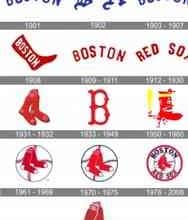If you are unsure as to whether or not you have a brand positioning statement then this post is your best bet to finding out 100% as it covers everything from its importance to practical examples, a template, and how to write an effective statement.
Overview
A brand positioning statement is the core of your business, whether you’re building a new brand or upgrading an old one. It serves as the “backbone” of your marketing strategy, guiding everything from product creation to advertising campaigns to how you answer the phone at work.
Basically, your positioning has an impact on all parts of your branding and how your market perceives you – it has an impact on everything your company offers and shares with your target audience about your product and brand. Effective positioning benefits your internal teams as well, allowing salespersons, marketing, service, and support teams to provide more pleasurable and on-brand experiences for customers.
Each piece of material on your company’s website, in an advertisement, or on your Twitter profile should clearly reflect the company’s basic values and brand.
But what exactly is a brand positioning statement?
Brand Positioning Statement Definition
A brand positioning statement is a succinct summary of a product or service and its target market, as well as how the product or service meets the target market’s specific needs. It’s designed to be used as an internal tool to help marketing teams match their efforts with the brand and value proposition.
Positioning statements explain how your product or service addresses a need in your target market or persona. They’re essential for any positioning strategy since they provide your brand with a defined vision.
Mission Statement vs. Positioning Statement
Your mission describes the brand’s goals or objectives and can be an important aspect of overall positioning.
A positioning statement, unlike a mission statement, is not intended for public consumption. The value that your brand, products, and services deliver to the target market is summarized in your company’s positioning statement. When it comes to your company’s “what, why, and how,” the mission statement is the “why,” and the positioning statement is the “what.” (If you’re curious about the “how,” here’s the answer.)
Positioning Statement vs. Value Proposition
Although both the value proposition and the positioning statement are important components of a company’s marketing strategy, there are some variations between them. A value proposition explains how your product or service differs from the competition. It provides an overview of the advantages of a product or service.
A positioning statement is more general, and it’s written after you’ve figured out what your company’s value proposition is. It also determines the most important consumer benefits, or why someone would want to buy your product or service.
What is the Purpose of a Brand Positioning Statement?
The value proposition is communicated to the brand’s ideal customers through the positioning statement. In the context of the buyer’s experience, it also frames the brand’s identity, purpose, and unique traits.
To write your brand positioning statement, you’ll need to be clear on the following features of your company:
- Who do you work for?
- What do you have to offer to them
- How do you present it?
- What motivates you to do what you do?
- How does this stack up against what’s already available?
Strategic Brand Positioning Statement Basic Elements
As previously stated in this post, in order to develop your brand positioning statement, you must first have a thorough understanding of your overall positioning. The following fundamental elements must be defined as part of this process:
- Target Market
- Market Segmentation
- Customer Pains
- Brand Promise
- Brand Identity and Values
- Mission
#1. Target Market
The “who” part of your positioning is your target audience. Simply put, it’s the group of people you’re trying to reach with your product or service.
“The riches are in the niches,” as the saying goes. This means that, even if everybody can use your product or service, you should still target certain buyers to keep your brand’s integrity and distinctiveness.
Creating a buyer persona, often known as your ideal customer, is one of the most effective strategies to establish a reliable target demographic.
#2. Product Positioning
Product positioning should focus on the product’s benefits rather than its features. Imagine your customer’s life before and after using your solution as a great method to do this. Then explain to them what happens after they make that decision – that’s the benefit you’ll mention in your product positioning.
#3. Market Segment
There are buyers and sellers in a market. A segment identifies a certain market category. Market segments can range from broad to specific, such as “grocery store” and “vegetarian health food store.” Market segments typically begin wide and then narrow as enterprises in that market extend their product and service offerings to the market’s consumers.
So, whether you’re in a developed industry or an emerging or specialized sector, you’ll need to figure out who the purchasers are, where they’re looking for goods and services, and who has their attention right now. You’ll want to figure out what your competitors have to offer and how you can set your brand different from them.
#4. Customer Pain
Customer pains are issues or problems that your target audience is having that could be addressed with products or services in your market category. Your product or service should try to alleviate client problems by offering a solution.
#5. Brand Promise
In the end, your brand promise is what the target audience or buyer persona stands to gain from purchasing your product or service; it’s what success looks like to them if their pain or problem is handled.
#6. Brand Identity
Brand identity refers to your company’s personality, which encompasses both visible (such as logo design) and unseen elements (such as values or voice). Including promotional products in your strategy can reinforce this identity, as they often carry your logo and brand colors. One facet of strategic market positioning that will help you stand out from competitors and achieve awareness from your target audience is brand identity.
#7. Brand Values
Values drive your company’s decision-making within the context of your brand. They shape your company’s culture and make a positive impact on your target audience. They are the intangible tools that you use to carry out your mission and vision.
#8. Mission
The “why you do it” part of your brand is your goal. It entails your company’s goals, objectives, and strategy.
You can start writing the Brand positioning statement once you have a firm grasp of your target market, brand identity, and positioning.
How to Write a Brand Positioning Statement with Examples
Make sure you’ve developed your company’s value proposition before you start drafting your positioning statement. Before demonstrating how your product or service can be the best answer for those difficulties, you need first define your target audience and their pain areas.
What is the promise that your company makes to its customers? And how will your company keep that promise? This is the moment to figure out which parts of your product or service set you apart from the competitors.
In general, it’s time to write the positioning statement once you have a clear idea of the value your solution provides.
Keep the following suggestions in mind while creating and analyzing your brand positioning statement:
#1. Create a Vision Board
Brand Positioning statements are documents that are written. It can be difficult to describe what your business is, who it serves, and why it matters in just a few phrases because they don’t incorporate photographs, video, or other visuals.
So create a vision board instead of a blank page to avoid the initial blank page problem. This works because, according to a recent study by Columbia University experts, an image’s visual features are linked to emotional response.
To get the most out of this response, seek images that show your customer in the situation where they most need your product or service. Take note of the emotions in the images, as well as who is in there with your ideal customer and what they’re doing to fix the problem.
Making a vision board that depicts your target customer when they are in desperate need of your goods will help bring your positioning statement to life.
#2. Keep it Brief
The positioning statement for your company should be brief and to the point. If at all possible, limit yourself to three to five sentences.
#3. Make It One-Of-A-Kind and Memorable
This statement should be tailored to your business and the issues you want to address. Ensure to carefully underline your brand’s unique traits while writing your brand positioning statement.
#4. Stick to your Business’s Basic Beliefs
It’s not the time to get clever and pitch a fresh business angle in the positioning statement. The positioning statement for your brand should appropriately reflect your company’s basic principles.
#5. Describe Exactly What the Brand Offers to Customers
Who does your business cater to? What services does your organization provide to this demographic? In your positioning statement, describe clearly who your customer is and how you will assist them.
#6. Set Your Business Out From the Competitors
A good positioning statement should explain how a brand stands apart from its competitors. Emphasize your company’s distinct characteristics and how they help you service your clients.
#7. Keep it Simple
Because of its simplicity and clarity, your team should be able to match important business choices with your brand’s positioning statement in practically any situation.
#8. Consult a Colleague
Half the time, your eyes may fool you once you’ve produced your positioning statement. You’ll believe what you’ve written is wonderful after spending several hours refining every word when in reality it’s full of jargon, acronyms, and features that aren’t clear to anyone outside of your firm. Just because positioning statements aren’t intended for public consumption doesn’t mean they shouldn’t be simple to comprehend. This document will also be used by investors, new hires, and other agencies who work closely with your company.
To jargon-proof your positioning statement, have a coworker who is not affiliated with your company examine it and provide input. They’ll make important observations that you might have missed.
Template for a Brand Positioning Statement
Here is a simple template for a positioning statement according to HubSpot;
[Your brand name] delivers [primary benefit that distinguishes your service from competitors] for [your target market] who [target market need] because [reason why target market should believe your differentiation statement.]
You can use the template above to create a positioning statement for your startup or small business. Include information about your target market, company, and the key features that set your product or service apart from the competition.
However, each business is different, therefore it’s fine if your statement doesn’t exactly match the template, but make sure to include the following key points:
- Your target market’s description.
- A description of the requirements of the target market.
- How your business will cater to their requirements.
- What makes your product or service stand out from the rest?
- Why should consumers in your target market believe the claims made by your brand?
Examples of Brand Positioning Statements
Because positioning statements are designed to be kept private, you’ll rarely come across one on the internet. We’ve produced a few example statements for prominent brands utilizing the knowledge we know about them as consumers (or employees!) using the structure we presented before. Examples of brand positioning statements from well-known businesses are provided below to help you get a sense of how to write one for your company.
#1. Coca-Cola
Coca-Cola’s Brand Positioning Statement is as follows:
Coca-Cola offers a wide variety of the most refreshing solutions for consumers looking for high-quality beverages – each generates a great experience for customers when they enjoy a Coca-Cola brand drink. Coca-Cola products, unlike other beverage options, inspire happiness and create a positive difference in customers' lives, and the brand is passionately focused on consumers' and customers' requirements.
#2. White Dog Distilling
Brand Positioning Statement of White Dog Distilling:
Carlo and Alecia Catucci, a husband and wife duo, launched White Dog Distilling in 2016 centered on passion, spirit, and the journey from grain to glass. With Carlo's physics background and Alecia's culinary and product development skills behind them, they set out with one aim in mind: to create high-quality distilled spirits that would appeal to both novice and seasoned spirits drinkers.
#3. Alaska Airlines
Brand Positioning Statement from Alaska Airlines:
We're building an airline that people want to fly. Our fundamental principles of "own safety," "do the right thing," "be kind-hearted," "deliver performance," and "be outstanding at work and in our communities" guide us every day. Alaska Airlines is also an Equal Opportunity Employer and promotes a diverse and inclusive workplace.
#4. Amazon
Brand Positioning Statement for Amazon’s:
Amazon is a one-stop online shopping platform for customers who want to buy a large choice of things with speedy delivery. Amazon's customer focus, enthusiasm for innovation, and commitment to operational excellence set it apart from other online retailers.
#5. IMPACT
The Positioning Statement of IMPACT is as follows:
By reinventing the agency-client relationship through the ground-breaking principles of They Ask, You Answer, we at IMPACT have transformed the way inbound marketing is done and taught to businesses.
Rather than establishing a dependence loop in which our customers rely on us to move the needle and deliver results, we empower all of the businesses we work with to take control of their digital sales and marketing. Instead of fishing for you, we'll "teach you how to fish" so you may enjoy incredible results for the rest of your life.
#6. Beautycounter
Beautycounter’s Positioning Statement is as follows:
One by one, we're guiding a movement toward a future in which all beauty is true. We are fueled by people, and our common goal is to get safer products into the hands of as many people as possible. Formulate, advocate, and educate is our philosophy for developing high-quality products while adhering to the highest safety requirements. Why? It's truly that simple: beauty should be beneficial to your health.
#7. Nike
Statement of Nike’s Positioning:
Nike offers top-performing sports outfits and shoes made with the highest quality materials for athletes in need of high-quality and trendy athletic wear. Because of Nike's commitment to innovation and investment in cutting-edge technologies, its products are among the most advanced in the athletic clothing business.
#8. Thrive Market
Thrive’s Market Positioning Statement is as follows:
Thrive Market is a membership-based online marketplace that makes the highest-quality, healthy, and sustainable items accessible to people of all budgets, lifestyles, and locations.
#9. Apple
Positioning Statement by Apple:
Apple leads the technology business with the most innovative products for people looking for the best personal computer or mobile device. Apple prioritizes technical innovation and employs an innovative approach to corporate best practices, taking into account the impact of its goods and processes on customers and the environment.
#10. McDonald’s
Brand Positioning Statement for McDonald’s:
McDonald's, with its courteous service and consistency throughout thousands of convenient locations, is a leader in the fast-food market for individuals looking for a quick-service restaurant with an amazing customer experience. It distinguishes itself from other fast-food restaurants by focusing on improving operations and customer happiness.
#11. HubSpot
Positioning Statement from HubSpot:
HubSpot has been on a quest to make the world more inbound since 2006. HubSpot's award-winning software, services, and support are used by over 100,000 customers in over 100 countries to improve the way businesses attract, engage, and delight consumers. HubSpot's CRM, Marketing Hub, Sales Hub, and Service Hub provide businesses with the resources they need to Grow Better.
How to Measure the Effectiveness of Your Brand Positioning Statement
It’s possible that your first draft will not become your final brand positioning statement. Ask yourself the following questions before signing off on what you’ve written:
- Will it assist you in making marketing decisions?
- Is it effective at distinguishing your brand?
- Is it plausible?
- Will it be adaptable enough to allow for future expansion? (In other words, is it putting your brand in the best possible position for long-term success?)
- Is it able to conjure up a clear mental image?
- Is it targeted towards your target audience?
- Will it be consistent throughout your entire brand?
- Is it a motivator for your target audience?
- Is it distinct? (Does it differ from the positioning of your competitors’ brands?)
- Will it simple to comprehend?
- Is it a memorable phrase?
- Is it possible for you to OWN it?
If you can’t answer “yes” to all of these questions, go back over your statement and tweak it until you can.
Design Your Company’s Positioning Statement
To guarantee your positioning is accurate and effective for your unique personalities, identify and segment your target audience. You’ll be well on your way to promoting your business and generating a consistent message across all platforms once your positioning statement (or statements) are complete.
A Few More Pointers:
All of the Elements Must Work Together
Your point of distinction should be distinguishable within your industry and relevant to your target market. Select as broad a category and target demographic as possible without overstretching your brand.
Look For the White Space in the Category
If your car competitors are focusing on “performance” for males, try focusing on “safety” for women.
Make Sure Your Product Works
A promise is what a brand is. Make sure your brand delivers on the unique point of distinction you’ve chosen.
Don’t Make Your Category Name Too Complicated
Consider how your brand might change in the future. Don’t limit yourself.
In Their Words, Not Yours, Define the Category
Avoid the temptation to define the category according to your preferences. Instead, consider how the customer defines it.
Make a List of Reasons to Believe
After you’ve completed your positioning statement, you’ll need to create “reasons to believe.” For example, L. L. Bean’s unique selling point has always been “outdoor quality that lasts.” A significant incentive to believe and a key message was their lifetime guarantee. As the company matures into a lifestyle brand, it is moving away from this basic message, yet its brand positioning remains the same.
The Position of a Brand Is Rarely Altered
While campaigns come and go, strategic posture should remain constant. Take your time to get it right, then stick with it until the category shifts and your placement becomes obsolete. People’s perceptions of brands that shift positioning are, oftentimes, clouded.
Participate in the development of a Brand Positioning Statement With Others
Consider involving employees and/or stakeholders from your company in the clarification of your brand positioning statement. Oftentimes, owners believe that all of their staff are on the same page and understand their unique selling proposition, only to discover that they all have quite different perspectives on the brand. These many viewpoints can be extremely useful in developing a brand positioning statement, assisting you in determining the best (and most honest) positioning for success.
What Is an Example of Brand Positioning?
Prominent examples of brand positioning and statements include those from Apple, Hubspot, Nike, Amazon, and other brands in this post.
What Should a Brand Positioning Statement Include?
In a brief, succinct phrase, a brand positioning statement outlines what your brand does, who you target, and the benefits of your brand. Although the statement is often an internal document, it should be used as a guide to ensure that all information is consistent.
How Do You Write a Position Statement?
A thesis or objective is similar to a position statement. It expresses one side of a debatable point of view. So gather a list of reasons to support a particular viewpoint before writing a brand position statement. Next, compose a phrase or two that ties everything together and clarifies your position to the readers.
What Are 4 Elements of a Positioning Statement?
The four main aspects of the brand positioning statement are the target audience, category (common category of the market), distinction from the competition, and payoff (benefits).
What Is Nike’s Positioning Statement?
It is the essence of Nike’s brand, and it has been their stance since their inception. It’s why the renowned phrase “Just Do It.” is so powerful, and why the brand promise, “To deliver inspiration and innovation to every athlete in the globe,” is as relevant today as it has always been.
Related Articles
- FINANCIAL PLANNER: How to Become a Certified Financial Planner
- Brand Positioning: Best Practices, Examples, Strategies & How-to-Guide
- How Cisco Brand Positioning Is Making Them Stronger.
- Brand Development Simplified!!! Best Practices & All You Need
- Store branding Guide: Retail Store Branding Ideas
- Dog Food Branding: Best 2023 Practices & Tips For Any Business
- STARBUCKS LOGO: Evolution, Significance, Branding Models & Tips






